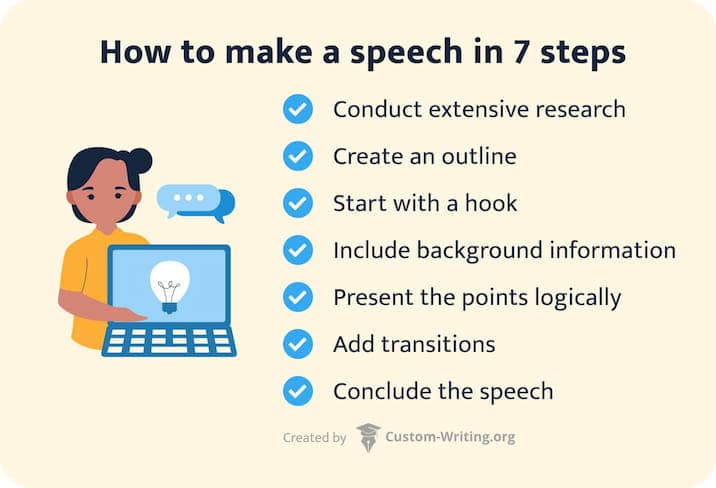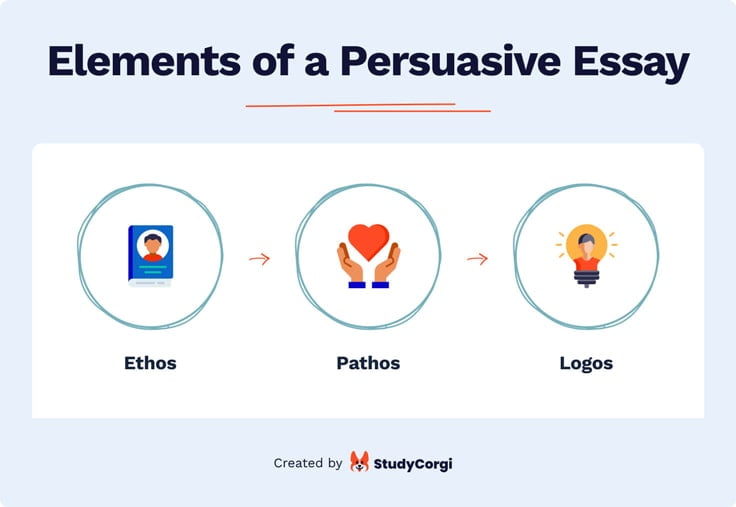
- Business Guides
- Digital Marketing Guides
- How To Guides
- Human Resource Guides
- Hustle Guides
- Marketing & Sales Guides
- Startup Guides
- Brand Competitors
- Brand Failure
- Brand History
- Brand Statistics
- Business Models
- Business Strategies
- Startup Essentials
- Marketing Essentials
- Branding Essentials
- Management Essentials
- Crypto Essentials
- Development Essentials
- Product Management
- Project Management
- Sales Essentials
- Software Reviews
- Startup Discovery – Noteworthy Startups
- Startup Ideas
- Startup Process
- Startup Resources
- Startup Courses
- AI Prompt Generator
- Business Idea Generator
- Startup Cost Calculator
- Slogan Generator (AI-Powered)
- ChatGPT Prompt Generator
- Midjourney Prompt Generator
- Stable Diffusion Prompt Generator
- Elevator Pitch Generator
- Free Startup Ideas

🤖 Free Speech Generator (AI-Powered)
An AI speech generator effortlessly transforms basic thoughts into eloquent presentations or speeches, merging convenience with creativity. You now have a powerful tool at your fingertips to craft speeches that captivate and communicate effectively, without the stress of starting from scratch.
Crafting a speech that resonates with your audience, conveys your message clearly, and leaves a lasting impact can often feel like an uphill battle. With the right tools, however, this process can become not only easier but also more efficient. Enter the AI-powered speech generator, a modern solution designed to streamline your speechwriting journey. This guide aims to unveil how you can harness the power of such technology to create compelling speeches. Whether you're addressing a small gathering or a large audience, the focus here is on simplifying the creation process while ensuring your voice shines through. So, let's delve into how to craft speeches that captivate and inspire, with a little help from AI.
What is a Speech?
A speech is a formal address or discourse delivered to an audience. It serves various purposes, such as informing, persuading, entertaining, or inspiring listeners. Speeches are integral to numerous facets of society, including politics, education, business, and social movements. The effectiveness of a speech hinges on its content, structure, and delivery. The content must be relevant and well-researched, tailored to meet the needs and interests of the audience. The structure, which typically includes an introduction, body, and conclusion, should be coherent and logically organised to facilitate understanding and retention. The introduction of a speech is crucial; it should capture the audience's attention and outline the main points that will be covered. This may involve using a provocative question, a striking statistic, or a compelling story. The body of the speech is where the speaker develops their arguments or ideas, supported by evidence and examples. Finally, the conclusion summarises the main points and leaves the audience with a strong impression or a call to action. Delivery is of equal importance – a speaker’s tone, pace, and body language must harmonise with their message to effectively engage the audience. The strategic use of rhetorical devices, such as repetition, metaphors, and rhetorical questions, can significantly amplify a speech's emotional appeal and persuasive power.
Importance of Speech
Understanding your audience sets the stage for the undeniable importance of speech in effectively conveying ideas and sparking change. Crafting speeches is more than just assembling words; it's about creating a bridge between you and your listeners, enabling a flow of ideas that can inspire, persuade, and inform. The power of compelling speeches lies in the content and the way they're delivered. By mastering effective speech techniques, you're equipped to capture and hold your audience's attention, making every word count.
Consider the impact of a well-delivered speech:
- A standing ovation as you hit the final word, the audience moved to action.
- Nods of agreement and understanding as complex ideas become clear.
- Laughter and tears as emotional connections are forged.
- Eager discussions post-speech, signalling minds stimulated and opinions swayed.
Incorporating speech delivery tips into your preparation can significantly enhance your speech presentation, making your message heard and felt. Whether it's through the tone of your voice, the pace of your words, or the passion behind your message, each element plays a crucial role in making your speech unforgettable.
Critical Components of a Successful Speech
To kick off your speech on the right note, you must craft a strong opening that grabs your audience's attention. Then, it's essential to develop the core message in a clear and compelling way, ensuring your main points are easily understood and remembered. Finally, wrapping up with a powerful conclusion will leave a lasting impression and reinforce your key messages.
Crafting a Strong Opening
A strong opening is crucial in grabbing your audience's attention and setting the stage for an impactful speech. Effective speech writing hinges on your ability to intrigue and engage your listeners from the very beginning. Avoiding everyday speech writing mistakes, like starting with a dull greeting, can improve your speech's effectiveness. Here are vital tips to ensure your opening is memorable:
- Begin with a compelling hook or attention-grabbing statement.
- Clearly state the purpose or central idea of your speech.
- Use storytelling, humour, or a thought-provoking question to connect with your audience.
- Establish credibility and build rapport early on.
- Consider these speech writing tips and speech delivery techniques to craft an opening that resonates and captivates your audience from the start.
Developing the Core Message
Identifying your speech's core message is crucial for effectively communicating your main idea to the audience. This core message is the heart of your speech writing process, guiding the substance and delivery to keep your speech engaging and impactful.
|
|
|
Relevance | Keeps audience engaged | Choose a topic you're passionate about |
Substance | Adds depth | Back up with facts and research |
Delivery | Enhances message | Practice tone and pacing |
Concluding Effectively
After pinpointing your speech's core message, it's essential to focus on wrapping up your presentation with a powerful conclusion. In speech writing, the conclusion isn't just a final remark; it's your last chance to make an impact. Here are four key elements to ensure your closing resonates:
- Summarise critical points to refresh the audience's memory.
- Issue a call to action , inspiring listeners to take the next step.
- Use impactful language to craft a strong closing statement that sticks.
- Conclude with positivity , leaving your audience motivated and uplifted.
Steps to Write an Effective Speech
To start your journey in writing an effective speech, you'll first need to choose a topic that resonates with you. Understanding your audience's interests and needs is essential to tailoring your message accordingly. Then, organising your ideas logically will lay a solid foundation for writing a speech that genuinely engages and informs.
Choosing Your Topic
Before diving into the details of your speech, it's essential to choose a topic that sparks your interest and resonates with your audience. In speech writing, selecting the right topic is crucial for crafting an engaging speech. Consider these key steps:
- Conduct audience analysis to align your topic with their interests and expectations.
- Focus on your expertise and passion to ensure authenticity and depth.
- Incorporate relevant current events to add timeliness and relevance.
- Brainstorm to identify unique perspectives or insights you can offer.
Choosing a topic is the foundation of speech writing, setting the stage for an engaging and impactful delivery. Keep it relevant, specific, and attuned to your audience's preferences for a memorable presentation.
Understanding Your Audience
Before you start writing your speech, it's essential to understand who you're talking to. By analysing your audience's demographics, interests, and expectations, you can tailor your message to resonate with them. This strategy ensures your speech engages, connects, and makes a lasting impact on your listeners.
Strategies for tailoring your message to the audience
Understanding your audience is the key to crafting a speech that resonates and engages effectively. In public speaking, audience analysis and emotional intelligence guide you to create a tailored message that ensures audience engagement.
- Analyse demographics and interests
- Align with their values and experiences
- Adjust tone to match their emotional state
- Use relatable language and examples
Organising Your Ideas
Now that you've grasped your audience's needs, it's time to focus on structuring your speech for maximum impact. Organising your ideas ensures your message is clear and your points flow logically. This process involves outlining your speech, starting with a strong introduction, moving through your key points, and wrapping up with a compelling conclusion.
How to structure your speech for clarity and flow
Outline the main ideas you want to convey to ensure clarity and flow in your speech.
- Imagine your speech as a journey, where each point is a scenic stop.
- Visualise connecting dots that lead the audience through your narrative.
- Picture your ideas blooming like flowers in a well-tended garden.
- Envision your conclusion as a sunset, leaving a lasting impression.
- To craft a compelling narrative, incorporate speech writing, structure a speech, organise ideas, engage the audience, and conclude effectively.
Writing the Speech
Now that you've organised your ideas, it's time to start writing your speech. You'll want to craft an opening that grabs your audience's attention, develop the body with clear and engaging points, and conclude on a resonating note. Each step is crucial in creating a speech that's not only memorable but also impactful.
Crafting an attention-grabbing opening
Crafting an attention-grabbing opening is crucial in determining whether your audience tunes in or out from the start. In speech writing, knowing how to write a speech that captivates from the first sentence is critical. Here's how:
- Begin with a compelling question.
- Share an engaging anecdote.
- Present a surprising fact or statistic.
- Quote a powerful line that resonates.
Developing the body of the speech
After capturing your audience's attention with an engaging opening, it's time to build the core of your speech with well-organized main points.
|
|
1 | Begin by organising the main points logically. |
2 | Develop each point with supporting evidence. |
3 | Use smooth transitions between points. |
4 | Mix storytelling, data, and quotes to engage. |
5 | Summarise the main points before the conclusion. |
Concluding on a strong note
Conclude your speech by reinforcing your main message, leaving a lasting impression on your audience. In speech writing, the conclusion is your final opportunity to echo your main points and seal the deal.
- Summarise critical points to reinforce the message.
- End with a memorable statement to inspire.
- Avoid new information and focus on closure.
- Leave the audience motivated with a clear understanding of your message.
Using a Speech Generator
Utilising an AI-powered speech generator can significantly streamline the process of creating engaging and impactful speeches. When tasked with speech writing, the initial steps of preparing a speech can seem daunting. This is where an AI speech generator becomes invaluable. These sophisticated tools, which you can easily access with a speech generator online, employ natural language processing to craft content that resonates with your audience. Imagine having an AI speech writer at your fingertips, ready to transform your key points and themes into a compelling narrative. You're not just saving time but also incorporating creative insights that might not have occurred to you. These AI tools are designed to assist in structuring your speech, from the introduction to the powerful conclusion, ensuring your message is coherent and impactful.
What is the Speech Generator?
A speech generator is an AI-powered tool designed to help users create well-structured and impactful speeches tailored to specific purposes and audiences. This tool synthesises input regarding the speech's topic, purpose, key points, target audience, and desired tone to produce a coherent and persuasive speech. The speech generator provides a powerful resource for anyone needing to prepare a speech for public delivery, offering a customised, intelligent approach to speechwriting that enhances communication and audience engagement. Here’s how it functions:
Collecting User Inputs: To craft a customised speech, the generator requires detailed inputs from the user:
- Topic of Speech : Users specify the subject matter of the speech, which sets the thematic focus and provides a foundation for content development.
- Purpose of Your Speech : Users define the primary objective of the speech, such as informing, persuading, motivating, or entertaining. This helps shape the direction and intent of the speech.
- Any Key Points to Include : Users list specific points or arguments that must be covered in the speech. These key points ensure that all critical aspects of the topic are addressed comprehensively.
- Who's Your Target Audience? : Understanding who will be listening to the speech (e.g., professionals, students, community members) allows the AI to tailor the language, complexity, and references to suit the listeners' interests and level of understanding.
- How Should Your Speech Sound? : Users describe the desired tone of the speech, such as formal, inspirational, solemn, or humorous. The tone affects the choice of words and the overall approach to engaging the audience.
AI Analysis: After receiving the inputs, the AI analyses and integrates them:
- Content Organisation : The AI structures the speech logically, ensuring that it flows smoothly from introduction to conclusion, integrating the key points effectively.
- Audience Customisation : It adapts the content, style, and language to resonate with the specified target audience, enhancing relatability and engagement.
- Tone Implementation : The AI carefully crafts the speech to reflect the desired tone, using appropriate language, rhetorical devices, and pacing to convey the intended emotions and reactions.
Speech Generation: In the final step, the speech is generated:
- Content Synthesis : The AI composes the speech, making sure to articulate the key points clearly and persuasively, while maintaining thematic coherence throughout.
- Stylistic Refinement : The generator polishes the speech, optimising it for readability and impact, ensuring that the tone is consistent and the key messages stand out.
- Output Presentation : The completed speech is presented to the user, ready for delivery. It should sound natural, be engaging to the audience, and effectively meet the speech's purpose.
Benefits of Using a Speech Generator
We all know that creating content can be time-consuming and sometimes daunting. Here's how AI speech generation can benefit you and revolutionize the way you create and deliver your content:
- A Helping Hand with Writer's Block: Ever had those days where the words just won't come? AI-powered speech generators can step in and provide that much-needed assistance. These tools can generate content outlines, suggest topics, and even create drafts for you to work with. This not only saves time but also provides a solid foundation to build upon, ensuring you never start from scratch.
- Consistent, High-Quality Output: With AI, you can ensure a consistent tone and style across all your content. The technology can learn your preferences, brand voice , and style, ensuring a seamless experience for your audience. No more worrying about maintaining quality across various platforms and formats.
- Personalization: AI speech generation allows you to create personalized content for your audience. By understanding their preferences, demographics, and behavior, you can tailor your message to resonate with them on a deeper level. This level of customization creates a unique and memorable experience for your listeners.
- Time Efficiency: Creating content with AI is significantly faster than traditional methods. You can generate drafts, edit, and finalize content in a fraction of the time. This efficiency allows you to produce more content, reach a wider audience, and stay ahead of the competition.
- Cost-Effective Solution: AI speech generation can save you money. By automating content creation, you reduce the need for large writing teams and the associated costs. This makes it especially beneficial for startups, small businesses, and individuals looking to create high-quality content on a budget.
- Accuracy and Fact-Checking: AI-powered tools can fact-check and verify information as they generate content. This ensures that your speech or script is not only engaging but also accurate and reliable. In an era of misinformation, this feature is invaluable for maintaining credibility and trust with your audience.
- Language Translation: AI speech generators can translate your content into various languages, helping you reach a global audience. This feature breaks down language barriers and ensures your message is accessible and understandable to people from all corners of the globe.
- Data-Driven Insights: AI provides valuable insights and analytics about your content's performance. You can identify what resonates with your audience, their preferences, and areas for improvement. This data-driven approach allows you to continuously refine and improve your content strategy.
- Flexibility and Adaptability: AI-powered speech generation can be used across various platforms and formats, including podcasts, videos, presentations, and more. This versatility ensures that you can create engaging content, no matter the medium you choose to connect with your audience.
Steps to Use the Speech Generator
Using an AI speech generator can streamline the process of creating a well-structured and engaging speech tailored to your needs. Using an AI speech generator simplifies the process of creating effective and impactful speeches, saving time and allowing you to focus on delivery and engagement with your audience. Here’s a step-by-step guide on how to use this tool effectively, considering the inputs you've provided:
Step 1: Define Your Topic:
- Begin by entering the central theme or topic of your speech. This could be anything from a specific subject matter to a problem you want to address or a message you wish to convey. A clear topic helps the AI understand the focus and generate relevant content.
Step 2: Key Points and Outline:
- Next, provide the key points or an outline for the AI to follow. These are the essential ideas, arguments, or messages you want to convey. By structuring your main points, you guide the AI to create a well-organized speech.
- Don't forget to include any specific details, examples, or stories you want to incorporate. This helps the AI personalize the content and make it unique to your requirements.
Step 3: Set the Occasion:
- Context is crucial! Let the AI know the occasion for your speech. Is it a formal event, like a conference or seminar? Or is it a more casual setting, such as a team meeting or a social gathering?
- Providing this information ensures the AI adapts the content and tone to suit the occasion, creating an appropriate and engaging speech.
Step 4: Choose Your Tone:
- Selecting the right tone is essential to connecting with your audience. Do you want a friendly and approachable tone for a light-hearted event, or a more serious and authoritative style for a business conference?
- The AI generator will use your chosen tone consistently, ensuring a unified and impactful delivery.
Step 5: Generate and Review:
- Now, let the AI work its magic! Click "Generate," and the tool will create a draft based on your inputs.
- Review the generated content thoroughly. Check if your key messages are effectively conveyed and if the tone matches the occasion and your expectations.
Common Mistakes to Avoid
Writing an effective speech requires a keen understanding of the audience, the purpose, and the delivery. Even seasoned speakers can make common mistakes that detract from their message's impact. By avoiding these common mistakes, you enhance your ability to deliver a compelling, persuasive, and memorable speech. Always remember, the essence of great speech-making lies in connecting with your audience, delivering your message with clarity, and leaving a lasting impression. Here are some typical pitfalls to avoid to ensure your speech resonates well and achieves its intended effect:
1. Lacking a Clear Focus
- Overloading Information : Trying to cover too many topics can confuse and overwhelm your audience. It’s crucial to have a single, clear message that is easily understandable.
- Vague Purpose : Without a clear goal, your speech may seem directionless. Ensure every part of your speech serves the purpose of reinforcing your main message.
2. Ignoring Audience Needs
- Mismatched Content : Understand who you are speaking to. Tailor your content, language, and delivery style to fit the interests, expectations, and level of understanding of your audience.
- Underestimating Engagement : Failing to engage the audience can lead to disinterest and disengagement. Use questions, stories, or relevant jokes to keep the engagement high.
3. Neglecting the Power of Storytelling
- Lack of Personal Touch : People connect with stories much more than with abstract concepts. Incorporate personal anecdotes or relatable examples to make your points more vivid and memorable.
- Skipping Transitions : Jumping abruptly between points can confuse listeners. Smooth transitions help maintain the flow and guide your audience through the narrative.
4. Underestimating the Importance of Practice
- Inadequate Rehearsal : Not practising enough can lead to a delivery that feels unsure or disjointed. Rehearse your speech multiple times, ideally in conditions similar to those you'll face during the actual delivery.
- Ignoring Timing : Running too long or too short can affect the effectiveness of your speech. Time your segments during practice to ensure they fit within your allotted time.
5. Poor Use of Language
- Overly Complex Language : Using jargon, overly technical terms, or unnecessarily complex language can alienate your audience. Aim for clarity and simplicity.
- Repetitiveness : Repetition can be a powerful tool but used excessively, it becomes tedious. Balance is key to maintaining interest and emphasis.
6. Failing to Adapt
- Rigid Scripting : While having a script is helpful, overly relying on it can make your delivery seem unnatural. Be prepared to adapt your wording to feel more natural or respond to the audience's immediate feedback.
- Ignoring Audience Feedback : Not watching for and adapting to audience reactions can make your speech less effective. Adjust your pace, tone, and energy based on real-time audience engagement.
Example of a Speech
A great example of an effective speech is Dr. Martin Luther King Jr.'s "I Have a Dream" speech, delivered during the March on Washington for Jobs and Freedom on August 28, 1963. This speech is not only famous for its profound impact on the civil rights movement in the United States but also as a master class in oratory. This speech not only addressed the immediate concerns of the time but used a hopeful tone and a forward-looking vision that inspired action and echoed through history. Its effectiveness lies in its ability to connect deeply with the audience's emotions, using both the context of the time and universal themes of freedom and equality. Below, I’ll highlight the structure and elements that made it memorable:
Dr. King begins by referencing the Emancipation Proclamation, a powerful and symbolic choice that connects his speech to a pivotal moment in history. This establishes the gravity and historical context of his message.
Text : "Five score years ago, a great American, in whose symbolic shadow we stand today, signed the Emancipation Proclamation."
The Statement of the Problem
He vividly details the plight of African Americans, using imagery and repetition to emphasise the severity and persistence of racial injustice.
Text : "But one hundred years later, the Negro still is not free. One hundred years later, the life of the Negro is still sadly differently abled by the manacles of segregation and the chains of discrimination."
Vision for the Future
Dr. King’s speech is renowned for its visionary and hopeful outlook. He articulates a dream of a future where all people are judged by their character, not their skin colour.
Text : "I have a dream that my four little children will one day live in a nation where they will not be judged by the colour of their skin but by the content of their character."
Use of Repetition
The repetitive structure of “I have a dream” not only emphasises key points but also enhances the lyrical rhythm of the speech, making it more memorable and impactful.
Emotional and Cultural Resonance
King masterfully weaves references to patriotic songs, the Bible, and American ideals, crafting a narrative that appeals to a broad audience’s values and emotions.
Text : "And this will be the day — this will be the day when all of God's children will be able to sing with new meaning: My country 'tis of thee, sweet land of liberty, of thee I sing."
King concludes with a poetic and stirring vision of unity and freedom that extends beyond racial and geographic boundaries.
Text : "And when this happens, and when we allow freedom ring, when we let it ring from every village and every hamlet, from every state and every city, we will be able to speed up that day when all of God's children, black men and white men, Jews and Gentiles, Protestants and Catholics, will be able to join hands and sing in the words of the old Negro spiritual: Free at last! Free at last! Thank God Almighty, we are free at last!"
Additional Tips for a Good Speech
Writing a great speech that captures the essence of your message and resonates with your audience is an art form. It requires careful crafting, keen attention to detail, and a deep understanding of your audience's expectations and needs. By implementing these tips, you ensure that your speech is not only well-written but also well-received. Remember, effective speechwriting is as much about how you present your words as it is about the words themselves. Here are additional tips to help you elevate your speech writing:
1. Start Strong
- Captivating Opening : Begin with something that grabs attention — a provocative question, a surprising fact, or a compelling story. A strong start sets the tone and hooks your listeners right from the beginning.
- Establish Credibility : Quickly establish why you are a credible speaker on the topic. Mention your connection or experience with the subject matter early to build trust with your audience.
2. Use Clear Structure
- Logical Flow : Organize your speech into a clear, logical structure. Introduction, body, and conclusion should all be distinct, with each section naturally leading to the next.
- Signposting : Use verbal cues to guide your audience through the speech. Phrases like “Moving on to my next point,” or “Let me illustrate this idea,” help listeners follow your argument more easily.
3. Engage the Senses
- Vivid Language : Use descriptive language that appeals to the senses. This will paint a mental picture and make your speech more engaging and memorable.
- Varied Tone and Pace : Change your tone and pace at different points in the speech to maintain interest. Monotony can lose audience attention, while variation in delivery can emphasise key points.
4. Focus on the Audience
- Benefits to the Audience : Clearly articulate what’s in it for the audience. How does your message relate to their interests, needs, or desires?
- Call to Action : End with a strong call to action. Tell your audience exactly what you hope they will think, feel, or do after listening to your speech.
5. Revise and Edit
- Cut the Fluff : Remove any content that does not serve your main message or add value to the audience. Be ruthless in editing to keep your speech concise and impactful.
- Seek Feedback : Before finalising your speech, get feedback from others. Fresh ears can catch issues you might have missed and provide insights into how your words might be received.
6. Practice and Polish
- Rehearse Out Loud : Practice delivering your speech out loud to hear how it sounds and to refine your delivery nuances.
- Record Yourself : Listening to a recording of your performance can reveal areas for improvement in tone, pace, and clarity that aren’t always obvious in a silent read-through.
7. Adapt and Be Present
- Read the Room : During delivery, be alert to the audience's reactions. Be prepared to adapt your speech — perhaps by elaborating on points that resonate or by skipping parts that don’t engage.
- Stay Present : Maintain eye contact and be responsive to the audience. Showing that you are engaged and interested in their reaction creates a connection and makes your delivery more effective.
Get 3 New Researched Business Ideas Every Wednesday
Along with other startup-oriented knowledge.

Use this Online Speech Generator to Help You Quickly Create a Good Speech
How to use this tool.
- Select what you would like. To generate free speech topics or free speech content.
- Select the type of speech e.g. "Explanatory", "Motivational".
- Enter your speech topic.
- Enter the additional instructions for better results.
- Click "Generate Speech" and wait 1 minute to get the speech.
- You can generate again when you are not satisfied with the speech or the topics.
Are your assignments troubling you?
Get your troublesome papers finished by our competent writers now!
Special offer! Get 20% discount on your first order. Promo code: SAVE20
How Does Our Speech Creator Work?
You can use our tool to find a good topic and generate a good speech. To find a good speech topic, you need to enter the keyword, and the tool will generate the necessary topics related to your keywords.
To generate speech essays, enter your prompt, and the tool will generate a speech essay. After the tool has generated the speech, you don't have to download the speech; you copy and paste it into the documents and make the necessary edits to suit what you were looking for.
You can also hire our speech homework helpers to help you craft a great speech that will move your audience.
Benefits of Using Our Speech Maker
Our online speech generator has several advantages. They include:
- Quick document turnaround. Unlike handwritten speech, which takes much time to complete, our speech generator provides you with a speech within a short period.
- Guarantee speech quality . Our speech maker guarantees accuracy and quality in the generated text content. Our tool examines many human speeches to understand the meaning of words and human communication to determine the correct response.
- Increased Scalability and Flexibility . Our speech generator is versatile and caters for multiple uses. Whether you want a business presentation or a graduation speech, you can get a customized speech from our speech creator.
- Eradicate workflow inefficiencies . Speech-making is labor-intensive and time-consuming. You can use our speech maker to simplify and streamline your workflow, including brainstorming ideas for your research project.
- It is 100% free . You don't have to register or subscribe to any plan to use our speech generator.
What Makes a Good Speech
The following are the major components of a good speech:
- It should be concise . You should not take much time with lengthy introductions and irrelevant details.
- It should be clear . Your speech should be easy for the audience to comprehend and understand. So, avoid complex terms and pick the right delivery style.
- Avoid bias. Your speech should be objective. Avoid being over-emotional, base your opinions on facts, and avoid biased opinions.
- It should be relevant. Your speech topic should be perfectly relevant and interesting to your audience. Avoid much information that does not relate to the main topic.
Good Speech Examples
- Organ Donation Persuasive Speech
- Informative Speech about Stress Management
- Informative Speech about Stress Management among Students
- Speech on the Importance of Reading
How to Choose a Good Speech Topic
- Specify Your Goals. Establish the occasion and the message you want to convey to your audience.
- Assess Your Audience. Research your audience's knowledge, interests, needs, and background.
- Think of What You Can Offer Your Audience . Avoid shortlisted topics which you are not passionate about. And then ensure you have enough resources and knowledge on the topic you have chosen.
Random Speech Topics
Informative speech topics.
- Evolution of the human species
- Are male victims of domestic violence as well?
- Should gay couples be allowed to adopt?
- A guide for creating a strong profile on LinkedIn
- The drawbacks of vegan diets
Persuasive Speech Topics
- Foreign labor slows down the economy
- Voting rights should not be universal
- Google is the death of libraries
- Government should regulate internet usage
- Fashion is an important part of society
Informative vs Persuasive Speeches
An informative speech is a speech where the speaker is a professional and intends to transfer their knowledge or inform the audience about a specific topic. In a persuasive speech, the speaker aims to persuade the listeners to change their point of view.,
- An informative speech aims to deliver new information, while a persuasive speech aims to convince the audience to believe or do something specific.
- The informative speech presents facts and information to the audience, while the persuasive speech is based on logic and emotions.
- Informative speech does not rely on emotions to motivate the audience, but emotions are highly applicable in persuasive speeches.
- In an informative speech, the speaker acts as a teacher, while in persuasive speeches, the speaker is the leader.
No matter the type of speech you are writing, you must identify the purpose and maintain the focus. For informative speeches, you should remain objective and unbiased and present facts only. In a persuasive speech , you aim to persuade the audience to agree with your opinion. Use our speech generator to craft speech in any category.
Our words to time tool will help you estimate the time it will take to deliver your speech.
Other Popular Tools
- Free Essay Generator (Powered by AI)
- Free Plagiarism Checker
- Free Thesis Generator Tool
- Free Paraphrasing Tool
- Free Essay Title Generator
- Free Speech Generator
- Free Summarizer Tool
- Words To Page
- Words To Time
- Random Debate Topic Generator
Speech Generator
Start generating speech for free below.
If you need help with generating speech from content, refer below for your step-by-step guide.
Write about
Generate speech in these simple steps.
Enter speech content
Select language and tone
Click on the Generate button
Introducing the AI Speech Generator by WriteCream: Instantly Transform Your Thoughts into Engaging Speeches
Whether you’re a student preparing for presentations, a professional aiming to deliver a persuasive pitch, or someone seeking to leave a lasting impression with an impactful speech, the Writecream Speech Generator is your ultimate companion. No more struggling to find the right words or spending hours pondering over the arrangement of ideas.
How It Works:
WriteCream’s Instant speech generator harnesses the power of advanced AI technology to generate well-structured and coherent speeches effortlessly. Whether you’re a student facing a tight deadline or a professional seeking to articulate your thoughts eloquently, this tool is your ultimate solution. The process is remarkably user-friendly:
1. Input Your Topic: Paste or type your text into the provided input box.
2. Click to Generate: Once you’ve entered your topic, s elect your preferred voice and adjust settings if desired – like speed, accent, language and so on. Click the “Generate Speech” button.
3. Review and Refine: You can edit and modify the output as per your needs by changing texts, voice, language or speed.
Key Features:
– Tone Selection: Users can choose from a variety of tones such as friendly, formal, casual, professional, persuasive, humorous, empathetic, authoritative, and more. Each selected tone will guide the AI in generating content that aligns with the chosen style.
– Style Customization: Users can further customize the selected tone by adjusting parameters like sentence structure, vocabulary richness, sentence length, and use of specific language elements (metaphors, idioms, etc.).
– Multilingual Support: WriteCream supports a wide range of languages, allowing users to generate content in languages other than English. Users can switch between languages seamlessly without losing the desired tone.
– Content Length Control: Users can specify the desired length of the content, whether it’s a short paragraph, a full article, or something in between. WriteCream will adjust the generated text accordingly.
– Cost Savings: Avoid expenses associated with hiring voice actors or recording studios, especially for projects with budget constraints.
With our speech generation tool, you can effortlessly transform your written text into captivating voiceovers. Simply generate and download the speech in a seamless process. Login now at https://app.writecream.com/voiceover for advanced features and experience a whole new level of content creation.
Experience the future of content consumption with the Writecream Speech Generator. With its simplicity, versatility, and accessibility, this tool is poised to redefine how we interact with written information. Your ideas deserve to be showcased in the best possible light – let WriteCream help you achieve that effortlessly.
Create content in minutes, not weeks.
© Copyright 2024 Writecream | All Rights Reserved
Wait! Before you go...
Sign up to get 10,000 words per month for free, please enter your name and email below:.
Writing Tools
General Writing
- Paragraph Generator
Article Rewriter
- Paraphrasing Tool
- Essay Writer
- Essay Extender
- Sentence Expander
- Paragraph Rewriter
- Sentence Generator
- Plagiarism Remover
Assistant Writing
- Grammar Checker
- Online Proofreader
- Text & PDF Summarizer
- Spell Checker
- AI Translator
- Plagiarism Checker
- Punctuation Checker
Creative Writing
- Prompt Generator
- AI Response Generator
- Hashtag Generator
- Slogan Generator
- Tweet (Thread) Generator
- Instagram Caption Generator
- Script Generator
- AI Lyrics Generator
- AI Story Generator
Find captivating Instagram captions for all moments.
Explore perfect email templates for every occasion.
Discover ideal quotes to elevate your book, speech, or essay.
Find the right words to voice your thoughts.
Learn all there is to know about ChatGPT.
Easily translate into 100+ languages.
Explore personal bios for hottest social media platforms.
Discover heartfelt love letters for your beloved.
Learn everything about AI writing and tools.
Discover the top alternatives to well-known AI tools.
Comparisons of popular AI writing tools.
Browse our curated lists of best alternatives to popular AI writers.
Speech Generator
Equip yourself with hix.ai's speech generator, for crafting persuasive, engaging speeches tailored to your specific needs..
Simple Guide to Use HIX.AI's Speech Generator
Get persuasive speeches within minutes with HIX.AI's speech generator. Here are 5 easy steps to follow:
- 1. Head to the HIX.AI's speech generator page, and input your central theme or main idea, into the 'Speech Topic' box.
- 2. Set the 'Word Count' to ensure your speech meets your desired duration and context.
- 3. Customize the 'Target Audience' and 'Tone of Voice' options to suit your audience and event.
- 4. Select your preferred 'Language', hit 'Generate', and get ready to receive a persuasive speech crafted for your needs.

Try Our Powerful, All-in-One AI Writing Copilot
Empower your writing with 120+ AI writing tools
Bypass AI detection with 100% undetectable AI content
Create undetectable, plagiarism-free essays with accurate citations
Browser Extension
The all-in-one ChatGPT copilot: rewrite, translate, summarize, Chat with PDF anywhere
Master the Art of Oratory with HIX.AI's Speech Generator
Dive into the world of oratory with HIX.AI's speech generator. This cutting-edge tool, powered by artificial intelligence, crafts compelling speeches that resonate with audiences, ensuring your message is heard, understood, and remembered.
It can serve as a game-changer for a wide spectrum of users:
Public Speakers, Politicians, and Community Leaders: HIX.AI's speech generator serves as your digital speechwriter, helping to create powerful orations that engage audiences and incite action. Your vision, mission, or call to action is crafted into a compelling narrative.
Business Professionals: Enhance your presentations and pitches with speeches that command attention. HIX.AI's speech generator can help articulate your strategies, proposals, or reports into digestible and persuasive speeches that echo in the boardroom.
Educators and Students: HIX.AI's speech generator offers an innovative educational resource. It assists in crafting engaging lectures and presentations, or even helping students prepare for a debate or a speech delivery as part of their curriculum.
Event Hosts: From weddings to corporate events, HIX.AI's speech generator is your secret weapon for unforgettable speeches. It helps craft the perfect words to captivate your audience, making your event a memorable occasion.
Efficient Utilization of HIX.AI's Speech Generator: Key Considerations
When using HIX.AI's speech generator to create persuasive and engaging speeches, there are several key elements to keep in mind. Paying attention to these can help ensure your speech resonates with your audience and effectively communicates your message.
Here are some important factors to keep in mind:
Appreciate Your Audience: The first step to a successful speech is understanding your audience. Consider their demographic, cultural background, and interests. This allows you to personalize your speech content, tone, and language to better connect with your listeners and enhance their engagement.
Maintain Optimal Speech Length: A well-balanced speech length is crucial. It should be adequately long to encompass all your key points, but not overly extended to risk losing the audience's interest. HIX.AI’s speech generator can assist you in managing the perfect speech length according to your specified word count.
Adhere to the Central Topic: Stay focused on your main topic to keep your speech coherent and compelling. Meandering off-topic can confuse your audience and weaken the impact of your message. HIX.AI’s speech generator can help you stay on track by generating content based on your specific inputs.
Infuse Your Personal Touches: Lastly, don't forget to add your personal flair. While the AI does the heavy lifting, sprinkling your unique insights, experiences, or speaking style can add a layer of authenticity, making your speech more relatable and memorable.
Expanding Capabilities with HIX.AI's Speech Generator
| 👥 Audience targeted | Speeches tailored to your crowd |
|---|---|
| ⌛ Ideal duration | Perfectly balanced speech length |
| 🎯 Focused topic | Consistent, clear messaging throughout |
| 🌐 Multilingual support | Craft speeches in 30+ languages |
| 📚 Vast vocabulary | Rich, engaging use of language |
Venture Beyond with More AI Tools Like Speech Generator
Hix summarizer, funeral speech generator, story summarizer, article summarizer, 1. in what ways can hix.ai's speech generator elevate the quality of my speech content.
Leveraging AI technology, HIX.AI's speech generator takes into account your input, utilizes persuasive strategies, and adjusts the tone to deliver stirring speeches that connect and resonate with your audience.
2. Is having an account a prerequisite for using HIX.AI's Speech Generator?
While not a requirement, having an account allows you to generate up to 3,000 words every week. For those in need of more extensive content, subscription plans to offer additional word credits are available.
3. Can HIX.AI's Speech Generator tailor speeches to fit specific events or occasions?
Yes, indeed. Our speech generator can produce speeches apt for a wide range of events or occasions. To obtain the best results, we advise users to supply detailed, event-specific prompts when using the tool.
4. Does the HIX.AI Speech Generator support languages other than English?
Definitely. HIX.AI's speech generator caters to over 30 languages, complete with localized vocabulary and expressions, ensuring the authenticity of your speech and its resonance with varied audiences.

Try Our Powerful, All-in-one AI Writing Copilot Today!
Enhance your writing process with HIX.AI. Whether you're crafting fact-based articles, humanizing AI text, or rewriting, summarizing, and translating your content, HIX.AI provides the tools you need.

Speech Writer
Create compelling speeches with our AI speech writer — a tool to craft messages that resonate, from informative and persuasive to motivational and entertaining.
Instructions
- Type in what you need to write a speech about.
- Press "Generate" and Typli will write a speech for you.
Ready for Unlimited Inspiration?
Unlock premium features for content that stands out .
Try more AI writing tools
There's 131 to choose from.

Enhance your writing with Typli's Free AI Writer. Automate and improve your content creation process for blogs, articles, and more.

AI Text Generator
Unleash the power of AI to generate creative and engaging text with Typli's Free AI Text Generator.

AI Paraphrasing Tool
Looking for a reliable paraphrasing tool? Check out our AI-powered solution.

AI Summarizer Tool
Get to the point with our efficient AI summarizer tool.

AI Acronym Generator
Get personalized and original acronyms in seconds with our user-friendly generator tool that's perfect for all your needs.

AI Letter Generator & Writer
Quickly create professional or informal letters using our AI letter generator tool.

Passive to Active Voice Converter
Easily convert passive voice to active voice for a more impactful and engaging writing style.

Bullet Point Generator
Turn your ideas into clear, concise bullet points. Perfect for presentations, lists, and summaries.

AI Image Generator
Generate unique high quality AI images quickly.

AI Speech Writer

ChatGPT Rewriter
Transform your text with ChatGPT Rewriter - the ultimate tool for rephrasing and paraphrasing content.

Quote Generator
Generate compelling and impactful quotes with the help of our AI quote generator. Save time and stay inspired.

Sentence Rewriter
Transform your content with our AI sentence rewriter and create fresh, unique text.

English to Macedonian Translator
Effortlessly translate English text to Macedonian with Typli.ai’s Free English to Macedonian Translator. Ideal for students, professionals, and anyone looking to communicate or learn Macedonian effectively.

English to German Translator
Effortlessly translate English text to German with Typli.ai's Free English to German Translator. Ideal for travelers, students, and professionals seeking precise and fluent translations.

Persian to English Translator
Effortlessly translate Persian text to English with Typli.ai’s Free Persian to English Translator. Ideal for students, professionals, and anyone looking to understand or communicate in English effectively.

English to Spanish Translator
Effortlessly translate English text to Spanish with Typli.ai's Free English to Spanish Translator. Perfect for students, professionals, and casual users alike.

English to Latin Translator
Effortlessly translate English text to Latin with Typli.ai's Free English to Latin Translator. Ideal for students, researchers, and enthusiasts of classical languages.

English to Italian Translator
Effortlessly translate English text to Italian with Typli.ai's Free English to Italian Translator. Perfect for travelers, students, and professionals seeking accurate and fluent translations.

English to Russian Translator
Effortlessly translate English text to Russian with Typli.ai's Free English to Russian Translator. Ideal for travelers, students, and professionals seeking precise and fluent translations.

AI Writing Generator
Unleash the power of artificial intelligence to generate high-quality, engaging content with Typli's Free AI Writing Generator. Ideal for bloggers, marketers, and content creators.

AI Content Generator
Generate compelling, unique content instantly with Typli's Free AI Content Generator. Perfect for blogs, social media, and marketing material.

AI Headline Generator
Instantly generate eye-catching headlines with Typli's Free AI Headline Generator. Perfect for articles, blogs, and marketing campaigns.

Project Name Generator
Generate a creative and unique name for your project. Get name ideas that capture the essence and goals of your project.

Paragraph Rewriter
Produce authentic and captivating content by rewording paragraphs with our rewriter tool.

AI Paragraph Generator
Typli’s AI paragraph generator crafts sentences that flow like a river, delivering smooth, relevant, and surprisingly human paragraphs that get better with each use.

AI Word Expander
Add depth and creativity to your writing with our AI word expander tool for a more sophisticated language experience.

Hook Generator
Uncover the art of writing hooks, headlines, and intros that demand attention from your readers.
The Art of Oratory: Exploring the Different Types of Speeches
Public speaking has the power to inform, persuade, entertain, and inspire audiences. It’s a critical tool for leaders, educators, advocates, and anyone looking to make an impact through their words. In the world of oratory, there are several different types of speeches, each serving a unique purpose and requiring a distinct approach. In this article, we’ll explore the primary categories of speeches to help you understand their objectives and master the nuances of delivering each one effectively.
Informative Speeches: Educating Your Audience
An informative speech does exactly what its name implies: it informs. The primary goal of an informative speech is to educate the audience about a particular topic. The subject matter can range immensely, from explaining a complex scientific theory to demonstrating how to bake a cake.
Characteristics of an Informative Speech
Clarity : Your speech must be clear and easy to follow. Use language that your audience understands.
Facts and Data : Cite accurate information and statistics to establish credibility and support your points.
Engagement : Despite being informative, you still need to engage your audience. Use anecdotes, visual aids, or rhetorical questions to keep them interested.
Examples of Informative Speeches
A lecture on the impacts of climate change.
A presentation about the history of the internet.
A seminar on improving personal finance skills.

Persuasive Speeches: Swinging Opinions and Driving Action
While informative speeches focus on providing information, persuasive speeches aim to convince the audience to accept a particular viewpoint or take specific action. Politicians trying to garner votes, salespeople persuading customers to purchase a product, or activists encouraging societal change are all examples of persuasive speaking.
Characteristics of a Persuasive Speech
Appeal to Emotions : Persuasive speeches often appeal to the audience’s emotions, making them feel something that aligns with your message.
Logical Argumentation : Use logical reasoning to build your case. This includes citing evidence and crafting well-thought-out arguments.
Credibility : Establish yourself as a trustworthy and knowledgeable source on the topic.
Examples of Persuasive Speeches
A campaign speech by a political candidate.
A charity fundraiser appeal for donations.
An environmentalist’s talk aimed at reducing plastic use.
Demonstrative Speeches: Showing How It’s Done
Demonstrative speeches are a subset of informative speeches but with a focus on instruction. The goal of a demonstrative speech is to teach the audience how to do something through a step-by-step process. It is critical that these types of speeches are well-organized and that each step is clearly illustrated.
Characteristics of a Demonstrative Speech
Practicality : The task should be feasible and practical for the audience to perform.
Visibility : If you’re demonstrating something physical, every member of the audience needs to see what you’re doing.
Simplicity : Break down complex tasks into simple steps to avoid confusing your audience.
Examples of Demonstrative Speeches
A cooking show host teaching a recipe.
A tech guru explaining how to set up a home network.
A fitness expert demonstrating a workout routine.
Motivational Speeches: Inspiring Change and Achievement
When you think of a motivational speech, you might picture a coach rousing a team before a big game or a business leader inspiring employees towards higher performance. The key to a motivational speech is to inspire and energize your audience to take action or overcome challenges.
Characteristics of a Motivational Speech
Inspirational Stories : Use narratives about overcoming adversity, achievements, or success stories.
Passion : Your enthusiasm and belief in the message should be evident in your delivery.
Actionable Advice : Provide clear steps or methods that the audience can use to achieve their goals.
Examples of Motivational Speeches
A graduation speech encouraging students to pursue their dreams.
A TED Talk sharing a personal story of success.
A corporate leader spurring a team to exceed goals.
Entertaining Speeches: The Fun Side of Speaking
Entertaining speeches are delivered to amuse, delight, and captivate an audience. Humor, storytelling, and charisma are the cornerstones of an entertaining speech. Although the primary intent is to entertain, these speeches can also convey a meaningful message or moral.
Characteristics of an Entertaining Speech
Humor : Utilize jokes, puns, and comedic timing to lighten the mood.
Engaging Delivery : Your delivery should be lively and dynamic to hold the audience’s attention.
Substance : Even funny speeches can have depth. Blend entertainment with substance for a more impactful speech.
Examples of Entertaining Speeches
A best man’s toast at a wedding.
A stand-up comedian’s set.
An after-dinner speech at a corporate event.
Special Occasion Speeches: Marking the Moments That Matter
Special occasion speeches are delivered during significant events, and their content is tailored to the event’s purpose, honorees, or theme. These speeches can be informative, persuasive, motivational, or entertaining, but they should always be relevant to the event and audience.
Characteristics of a Special Occasion Speech
Relevance : The speech must be appropriate for the occasion and audience.
Personalization : Tailor your message to the specific event or honorees.
Brevity : Many special occasion speeches are shorter, so convey your message concisely.
Examples of Special Occasion Speeches
A eulogy at a funeral.
A speech commemorating the anniversary of an organization.
An acceptance speech at an awards ceremony.
Becoming a skilled orator means understanding the different types of speeches and mastering the art of adapting your content and style to the occasion. Whether your aim is to inform, persuade, demonstrate, motivate, entertain, or honor a special occasion, remember that the most effective speeches connect with the audience on a personal level and leave a lasting impression. With practice and attention to these distinct speech purposes and characteristics, anyone can become an effective public speaker.
Step into effortless content creation with Typli and elevate your writing today. Experience AI content writing made simple.
- Pangram Solver
- Anagram Solver
- Rhyming Dictionary
- AI Title Generator
- Poem Title Generator
- Book Title Generator
- YouTube Title Generator
- Essay Title Generator
- Title Rewriter
- Title Capitalization
- Sentence & Paragraph Rewriter
- Essay Writer
- Book Title Wizard
- Random Movie Generator
- Fortune Cookie Generator
- Random European Country Generator
- Random Country Generator
- Empty and Invisible Character Generator – Blank ( ) Texts
- Random State Generator
- Prompts Generator
- Text Repeater (Add Text, Repeat, & Share)
- Speech Generator
- Character Name Generator
- Name Generators
- Pokemon Name Generator
- Character Backstory Generator
- Song Generator
- Poem Generator
- Word Search Puzzles
- Ideation Articles
- Random Topic Generator
- Writing Prompt Generator
- Random Essay Title Generator
- Writing Articles
- Online Word Counter
- Online Grammar Checker
- Headline Analyzer
- Best Book Writing Software and Book Writing Apps
- 150 Best Resources for Writers
- Productivity
- English Language
- Grammar Tips
- Headline Analyzer Tool
- Title Capitalization Rules
- For WordPress
- Publishing Articles
- Email Marketing
- Book Articles
- How to Get A Book Published
- Best Literary Agencies
- How To Self Publish a Book
- Persuasive Speech Generator
Click the "Generate Speech" button above to see speeches.
About the Persuasive Speech Generator
Creating a persuasive speech is easy with our tool. Just select the options you want, enter a description of your persuasive speech and then click the button to create unique and creative persuasive speech.
This persuasive speech generator helps you craft the perfect speech. Leveraging the power of AI, you can craft unique speeches that will wow your next audience.
Other Speech Generators
- Keynote Speech Generator
- Motivational Speech Generator
- Best Man Speech Generator
- Maid of Honor Speech Generator
- Bridesmaid Speech Generator
- Groomsman Speech Generator
- Father of the Bride Speech Generator
- Father of the Groom Speech Generator
- Graduation Speech Generator
- Wedding Vows Generator
- Vows Generator
- Acceptance Speech Generator
- Farewell Speech Generator
- Commemorative Speech Generator
- Inspirational Speech Generator
- Accessibility
Forgot your password?
Lost your password? Please enter your email address. You will receive mail with link to set new password.
Back to login
PHOENIX AND TAMPA JULY 18-19 PUBLIC SPEAKING CLASSES ARE ALMOST FULL! RESERVE YOUR SPOT NOW

- Public Speaking Classes
- Corporate Presentation Training
- Online Public Speaking Course
- Northeast Region
- Midwest Region
- Southeast Region
- Central Region
- Western Region
- Presentation Skills
- 101 Public Speaking Tips
- Fear of Public Speaking
Online Speech Creator
Use this Online Speech Creator to Help You Quickly Create a Good Speech Outline!

Before You Start…
This presentation creator is designed to help you organize your thoughts. It won’t actually do all the work for you. Just follow the step-by-step instructions. If you answer every question , you will receive a simple, easy to deliver presentation guide. Before you start, we suggest that you glance at the following two blog posts:
- How to Design a Presentation Quickly (In 15 Minutes or Less.)
The summary of this post is to not try to write a speech word-for-word. Instead, come up with an outline of your presentation containing just a few key points. It is better to cover just a few points really well than to cover a bunch of confusing content. (Your speech is easier to deliver as well.) The Speech Creator will ask you to determine just three major points to cover in the presentation. This works for most speeches.
- Storytelling Techniques that Reduce Nervousness and Stage Fright
Most people who use this presentation creation tool for the first time really fight this advice. The examples and stories that you insert are what make your speech interesting and easy to deliver to your audience. THIS IS THE MOST IMPORTANT PART! If you skip this step, you will end up with a lousy presentation outline.
- Presentation Enhancers that Make Speeches More Interesting
This post identifies seven additional pieces of content that you can add to each bullet point to make them come alive. These will make good speeches great speeches.
Fill in Answers Below About the Presentation You Are Creating.
The system will send you a speech outline via email.
Who is the specific audience for your speech? The more specific that you make the audience, the easier it is to design a compelling speech.
What example, illustration, or incident (story) can you think of that best explains the point above? Think of a time you witnessed the above point in real life or give an example of how it could happen. If it is a conclusion, tell about how you came to the conclusion. (Just a few words to remind you. Don't write out the whole story.)
To add some impact or clarity, come up with an analogy, quote, visual aid, or other type of proof that point #1 is true. (Just a few words to remind you. Don't write out the whole item.)
Now, let's assume the audience really understands your first point. What would be the second thing that the audience needs to know about your topic? (Assume they know nothing about the topic.)
Come up with an example or story (explanation) of point two now, and then add impact with an analogy, quote, visual aid, etc.
Go through the same process with point three (and point four or five if needed). Determine what the next most important thing is to the audience, come up with a story or example, and add one impact item.
Just hit "Submit" and we'll email an outline to you...
For additional details, see Persuasive Speech Outlines .

presentation skills
View More Posts By Category: Free Public Speaking Tips | leadership tips | Online Courses | Past Fearless Presentations ® Classes | Podcasts | presentation skills | Uncategorized
Free Instant Speech Maker for Students
Are you stuck with an assignment to write a speech for school and don’t know where to start? Worry no more; our instant speech maker will generate any type of speech within a few seconds. All you have to do is include all the necessary information, and this AI-powered tool will generate random speech results. It is a free and effective speech maker that saves you from long hours of research and writing.
- 🔢 How to Use the Tool?
- 🤩 The 5 Benefits
💬 6 Speech Types
📍 how to make a speech in 7 steps, 🔎 references, 🔢 free speech generator: how to use it.
To instantly make a speech, you’ll need to take the following steps:
- Add the necessary details . Input the genre, topic, and purpose of the speech.
- Customize if needed . This step is optional; if you want something special to be discussed in the body paragraph, add this information.
- Get the result . The sample must be used for research and reference purposes only.
🤩 Instant Speech Maker: the 5 Benefits
Our instant speech maker can benefit students, researchers, and even corporate professionals. Let us take a look at some of the benefits of this free speech maker:
| 🆓 Free | You can use this instant speech maker free of charge without paying any money. Besides, it is easy to use since it has a simple interface. |
|---|---|
| 🎯 All-purpose | This tool generates a wide array of custom-written speeches. Whether you want an informative, instructional, or entertaining speech, you will get accurate results. |
| 🤖 AI-powered | This tool uses cutting-edge artificial intelligence technology with programmed algorithms to generate powerful speeches. It factors in the topic and genre to produce great results. |
| ⏰️ Quick | You can get results quickly within seconds of using this tool. |
| 🍭 Inspiring | This free speech generator helps you get rid of writer’s block. You will get inspiring ideas for your speech, no matter how challenging. |
The first step in speech preparation is to understand the genre in which it should be written . This will help you choose the right topic , vocabulary, and content to present in your speech.

Let us explore some of the common speech genres.
Informative Speech
Informative speeches are meant to educate people on a specific subject or topic. You must use factual evidence, data, and correct statistics to assist the target audience in understanding the main points.
This speech genre’s main purpose is to inform people of important information about a particular topic.
Entertaining Speech
Entertaining speeches seek to amuse a targeted group of people. Unlike regular speeches, this type is shorter and less formal.
You can incorporate humor and amusing stories instead of factual data and statistics. Examples of this speech type are presented at birthdays, weddings, or talent events at school.
Demonstrative Speech
Demonstrative speeches educate people about certain topics with the use of visual aids. The visual representation allows the audience to understand the subject in great detail. It could be educating and demonstrating to the public about using a certain product or device.
Persuasive Speech
As the name suggests, persuasive speeches aim to convince people about a specific point of view presented in the speech.
This genre is diverse and covers a wide array of topics:
- Entertainment
You must include supporting evidence to persuade the audience to believe your perspective.
Special Occasion Speech
This type of speech genre is unique and doesn’t follow a specific standard. It is tailored to fit the special occasion in question.
It could be:
- A staff party
- An award ceremony
It aims to communicate a short message within the context of the occasion. Such speeches are clear, concise, upbeat, and interesting. You don’t have to include statistics or data in these speeches.
Debate Speech
Debate speeches are structured and follow specific rules. These speeches are presented during debate shows. You must persuade the audience to believe your opinion about a certain subject matter. Such speeches use factual evidence and statistical data.
Writing a speech might seem challenging, but you can prepare a great performance with the right approach.
Once again:
The most important aspect of speech preparation is understanding the genre ; it helps you know whether your speech is entertaining, informing, persuading, or motivating the right audience.

Below are several steps you can follow to make an effective speech:
#1 Conduct Extensive Research
If you are preparing a formal speech, for instance, persuasive or informative, you must conduct extensive research using credible sources .
Keep in mind:
Your speech should contain factual data and statistics for effective communication. You can get information from books, articles, scholarly journals, or online sources.
#2 Create an Outline
The second step is to create a speech outline .
A standard outline comprises:
- An introduction section
- A main body
- A conclusion
A proper outline will guide you in content organization before drafting the speech.
#3 Start with a Hook
The first few sentences of a speech are crucial. You must begin with a hook sentence to capture your audience’s attention.
The introduction can make or break your speech essay. Depending on the speech genre, you can use a striking statement, a funny quote, or an inspiring message.
#4 Include Background Information
Make your speech relevant by connecting it to a broader issue. Adding background information to your speech allows people to understand the topic’s relevance. Ensure you make the introduction short and clear to avoid boring the listeners.
#5 Present the Main Points Logically
After a powerful introduction and contextual explanation, you can now present your points. Write each point clearly and include supporting evidence.
It could be factual data or statistics that further explain the points logically. Each paragraph should contain one point to avoid confusion.
#6 Include Transitions in Your Speech
Don’t forget to add transition words to guide the audience in following each point. Transitions enhance speech flow and assist readers in connecting the main points with ease.
#7 Conclude Your Speech
Finally, end your speech with a compelling thought that stimulates the readers’ minds. You can include a call to action to encourage them to take a desired action, depending on the subject you are covering.
Thank you for reading this article! If you’re looking for a way to structure a speech, check out our outline generator !
❓ Instant Speech Maker FAQ
❓ how to make a speech quickly.
The fastest way to make a speech is to use an automatic speech maker to generate an effective speech that communicates effectively. You can also use the ChatGPT tool for faster results.
❓ How to write a motivational speech?
The first step is to establish the primary purpose of your speech and identify the target audience. Start with a hook sentence and share inspiring stories in your speech. Be clear about your message and end with a compelling thought.
❓ How to make an outline for a speech?
The main sections of a speech outline include the introduction, main body, and conclusion. So, ensure you have a clear introductory statement, flowing points, and a thought-provoking conclusion.
❓ How to make a speech longer?
Depending on the genre, you can increase speech length by adding more details and supporting evidence in the main points.
- The 8 Key Steps to Successful Speech Writing (With Tips)
- Speeches - UNC Writing Center
- 10 Keys To Writing A Speech
- 15 Bakhtin Circle's Speech Genres Theory
- 7 ways to hook your audience in the first 60 seconds

Speech Maker AI
Ai-powered speech generation tool.
- Corporate presentations: Craft a compelling speech to inspire your team, present a new strategy, or communicate your company's vision.
- Keynote addresses: Create a memorable and influential speech for conferences, seminars, or events.
- Academic speeches: Develop a persuasive speech to present your research findings or argue a thesis.
- Special occasions: Write a heartfelt and engaging speech for weddings, anniversaries, graduations, or other celebrations.
- Political speeches: Generate a powerful and persuasive speech to communicate your political message and rally support.
New & Trending Tools
Text corrector and formatter, strategic planning and decision-making in healthcare tutor, healthcare organizational structures and governance tutor.
How to Write and Structure a Persuasive Speech
- Homework Tips
- Learning Styles & Skills
- Study Methods
- Time Management
- Private School
- College Admissions
- College Life
- Graduate School
- Business School
- Distance Learning
- M.Ed., Education Administration, University of Georgia
- B.A., History, Armstrong State University
The purpose of a persuasive speech is to convince your audience to agree with an idea or opinion that you present. First, you'll need to choose a side on a controversial topic, then you will write a speech to explain your position, and convince the audience to agree with you.
You can produce an effective persuasive speech if you structure your argument as a solution to a problem. Your first job as a speaker is to convince your audience that a particular problem is important to them, and then you must convince them that you have the solution to make things better.
Note: You don't have to address a real problem. Any need can work as the problem. For example, you could consider the lack of a pet, the need to wash one's hands, or the need to pick a particular sport to play as the "problem."
As an example, let's imagine that you have chosen "Getting Up Early" as your persuasion topic. Your goal will be to persuade classmates to get themselves out of bed an hour earlier every morning. In this instance, the problem could be summed up as "morning chaos."
A standard speech format has an introduction with a great hook statement, three main points, and a summary. Your persuasive speech will be a tailored version of this format.
Before you write the text of your speech, you should sketch an outline that includes your hook statement and three main points.
Writing the Text
The introduction of your speech must be compelling because your audience will make up their minds within a few minutes whether or not they are interested in your topic.
Before you write the full body you should come up with a greeting. Your greeting can be as simple as "Good morning everyone. My name is Frank."
After your greeting, you will offer a hook to capture attention. A hook sentence for the "morning chaos" speech could be a question:
- How many times have you been late for school?
- Does your day begin with shouts and arguments?
- Have you ever missed the bus?
Or your hook could be a statistic or surprising statement:
- More than 50 percent of high school students skip breakfast because they just don't have time to eat.
- Tardy kids drop out of school more often than punctual kids.
Once you have the attention of your audience, follow through to define the topic/problem and introduce your solution. Here's an example of what you might have so far:
Good afternoon, class. Some of you know me, but some of you may not. My name is Frank Godfrey, and I have a question for you. Does your day begin with shouts and arguments? Do you go to school in a bad mood because you've been yelled at, or because you argued with your parent? The chaos you experience in the morning can bring you down and affect your performance at school.
Add the solution:
You can improve your mood and your school performance by adding more time to your morning schedule. You can accomplish this by setting your alarm clock to go off one hour earlier.
Your next task will be to write the body, which will contain the three main points you've come up with to argue your position. Each point will be followed by supporting evidence or anecdotes, and each body paragraph will need to end with a transition statement that leads to the next segment. Here is a sample of three main statements:
- Bad moods caused by morning chaos will affect your workday performance.
- If you skip breakfast to buy time, you're making a harmful health decision.
- (Ending on a cheerful note) You'll enjoy a boost to your self-esteem when you reduce the morning chaos.
After you write three body paragraphs with strong transition statements that make your speech flow, you are ready to work on your summary.
Your summary will re-emphasize your argument and restate your points in slightly different language. This can be a little tricky. You don't want to sound repetitive but will need to repeat what you have said. Find a way to reword the same main points.
Finally, you must make sure to write a clear final sentence or passage to keep yourself from stammering at the end or fading off in an awkward moment. A few examples of graceful exits:
- We all like to sleep. It's hard to get up some mornings, but rest assured that the reward is well worth the effort.
- If you follow these guidelines and make the effort to get up a little bit earlier every day, you'll reap rewards in your home life and on your report card.
Tips for Writing Your Speech
- Don't be confrontational in your argument. You don't need to put down the other side; just convince your audience that your position is correct by using positive assertions.
- Use simple statistics. Don't overwhelm your audience with confusing numbers.
- Don't complicate your speech by going outside the standard "three points" format. While it might seem simplistic, it is a tried and true method for presenting to an audience who is listening as opposed to reading.
- 100 Persuasive Speech Topics for Students
- 100 Persuasive Essay Topics
- What Is a Rhetorical Device? Definition, List, Examples
- 50 Argumentative Essay Topics
- Examples of Great Introductory Paragraphs
- How to Write a Persuasive Essay
- 5 Tips on How to Write a Speech Essay
- Tips on How to Write an Argumentative Essay
- Writing an Opinion Essay
- How To Write an Essay
- 5 Steps to Writing a Position Paper
- How to Structure an Essay
- Ethos, Logos, Pathos for Persuasion
- What Is Expository Writing?
- Audience Analysis in Speech and Composition
- Definition and Examples of Analysis in Composition
Instant Debate Speech Maker Online
Debates are an excellent opportunity to develop many personal skills, become a more open-minded person, and learn new information. Through this activity, students improve critical thinking, public speaking, teamwork skills, increase their self-esteem, and learn to disagree with others.
Preparing for a debate can take a lot of time, which is why our team has created this tool and guide for you. With our debate speech maker, you no longer have to sit for hours and think about how to formulate your argument correctly! Also, on this page you will learn many useful facts about debates and get tips for preparing for them.
- 📢 Introduction to the Tool
🗣️ What Is a Debate?
👍 debate maker benefits, ✏️ how to write a debate speech, 🔗 references, 📢 debate script maker: an introduction.
If you’ve decided to participate in a debate, you probably know that this activity requires a lot of preparation. Sometimes, you may receive the topic of your debate in advance so that you have time to prepare thoroughly for it. But also, you may be given the subject on the day of the debate, and then you’ll have much less time to prepare. In either case, our debate maker will be an indispensable assistant!
When comparing AI vs human writers, artificial intelligence excels in the speed of content creation, although it loses in creativity. Unlike when using other AI chat bots, you don't have to bother with creating successful prompts. Using this tool is simple - to instantly make a speech, you’ll need to take these four steps:
- Type in the topic of the debate.
- State your position and audience.
- Indicate whether you are replying to an opponent.
- Click “Generate” and get your result!
A debate is a structured and formalized argumentative exchange between two or more opposing sides . While this practice is usually associated with the election season , it can also be often found in schools or colleges. Participants, categorized as either the “pro” or “con” side, systematically present and defend their perspectives on a given topic. They use evidence to back up their claims and. Each side takes turns articulating arguments and responding to their opponent's points.
The primary objective of a debate is persuasion - convincing the opposition and the audience. Although debates often lack a declared winner, they may conclude with a vote or judgment from adjudicators in formal settings. Informal debates can persist until one side concedes.
Debate Terminology Examples for Students
Here, you can become familiar with the basic terms. It’ll be beneficial for you to learn them to make it easier to grasp the debate structure further.
- Adjudicator - An impartial observer who evaluates the debate. Such moderators provide feedback on the quality of arguments and overall performance. Also, they can contribute to determining the winner in formal debates.
- An affirmative - A team or speaker supporting the motion in a debate. Affirmatives present arguments in favor of the proposition. They aim to convince the audience or adjudicators of the motion's validity.
- Motion - The central topic, idea, or statement being debated. The motion frames the discussion and determines the stances of the affirmative and opposition sides. Debaters construct arguments either in support or against this subject.
- Chairperson - The person responsible for moderating and overseeing the debate. Their goal is to maintain order and ensure adherence to the rules. The chairperson may introduce speakers and the motion.
- Card - A card is a paragraph or several paragraphs taken from an authoritative journalistic or scholarly source that proves the validity of a particular argument. It should be a verbatim quotation without additions or paraphrasing. It is important to explain the quote and how it relates to the argument.
- Floor - The general audience or participants who are not actively engaged in the debate but may have the opportunity to pose questions. They can make contributions during designated segments. The floor adds an interactive element to the discussion.
- Opposition/a Negative - A team or speaker taking an opposing stance on the core topic. The opposition presents arguments countering the proposition. Such arguments should demonstrate flaws in the affirmative's position and persuade the audience that the motion is unsupported.
- The first speaker - The initial speaker of a team. They introduce and establish the main arguments supporting or opposing the motion. Their speech should set the tone for the team's position and outline the critical points to be developed by subsequent speakers.
- The second speaker - The second speaker introduces additional evidence and reinforces the team's position. They aim to strengthen their affirmative/opposing case and respond to the arguments from the other team.
- The third speaker - The last speaker should summarize the team's key points. They may also respond to opposition’s reasons raised during the debate. The goal is to leave a lasting impression on the adjudicators before the discussion concludes.
- Reply speeches - Reply speeches are the concluding words from both the affirmative and opposition sides. These speeches are often shorter, not more than three minutes. Such speeches are the last chance to influence the overall impression, so they should strongly support your ideas.
What Does the Maker of the Argument Do in a Debate?
In a debate, the first speaker, whether on the affirmative or opposition side, should:
- Formulate a clear and concise stance on the motion.
- Organize arguments logically, presenting a structured case.
- Support points with relevant facts and examples.
- Convince adjudicators and the audience of the credibility of their position.
The Structure of a Debate
Whether an academic debate or a parliamentary one, the structure and ground rules essentially remain the same.
In this section, we'll briefly explain how your proceedings are going to look like:
- Gathering the sides . At this stage, you should determine the teams and their participants. They are divided into affirmative and negative sides. As a rule, the debates should include three speakers , who will take turns and, at each stage, strengthen their position. All participants should meet 15 minutes before the start to prepare materials .
- Starting the debate . Participants should determine the debate’s time limit, as speeches cannot last nonstop. Usually, each speaker is given a maximum of 3 minutes for their presentation. At the beginning, the speakers should introduce themselves. The duration of the answer is regulated by the timekeeper , who should give a bell 30 seconds before the end of the speaker's time to start summarizing.
- Debating the topic . The core of the debate involves a structured exchange between the sides. The first speaker for the affirmative introduces the motion, presenting key arguments. The opposition's first speaker responds, presenting counterarguments. This pattern continues with subsequent speakers building upon and responding to the points raised. The debate format could also include cross-examination or questioning segments.
- Finishing the debate . Both sides deliver final counter-speeches summarizing key arguments. The adjudicators then assess the overall performance of each side. The persuasiveness of the arguments presented assists in the audience’s decision-making. Participants may engage in discussions and receive feedback . After the debate, each team is given the opportunity to thank everyone in attendance.
As you've probably already realized, getting ready for such a significant event will take a lot of time. You'll need to gather your thoughts, stay level-headed, and be assertive in your stance. This preparation process can be quite overwhelming. That's why our debate script maker is the perfect solution!
This debate writer has many advantages:
- Time-saving . This AI tool will speed up the process of creating a script. You won't have to worry about the structure and arguments.
- Inspirational . Our maker will allow you to explore different points of view, and you may look at your discussion topic from a new angle that will inspire you.
- Free . You can use the debate generator without prepayments and subscription fees. Besides, our tool does not have any limit on the number of requests.
- Online . Finally, thanks to online access, you don't need to download any apps, so that you can use our speech maker anytime from any device.
Our tool is a great way to save time and get that initial burst of inspiration for your debate. However, that is just the beginning. You will still need to edit and finalize this speech. Additionally, you may find it helpful to learn how to write one yourself.
The following steps will show you how to improve your speech and prepare you for your future debates:
- Compelling beginning . The opening of your speech is of the utmost significance. Your task is to captivate the audience and create the overall atmosphere of the speech. We suggest using a hook at the very beginning. It can be a question or a fact intended to capture the attention of your opposition and the audience. You could also use a quote from a famous person, an interesting statistic, a rhetorical question, or even a relevant personal anecdote.
- Presenting your arguments . This is the time to talk about your position on the topic. Be sure to formulate a concise thesis statement . After that, you should provide the arguments that support it. Explain each point clearly to avoid misunderstanding among the audience.
- Explaining the position . Follow a structure where each of your arguments is followed by evidence and then justification. Proof builds credibility and engages the listeners. Ensure that you have data only from relevant and reliable sources.
- Summarizing . In the concluding part of your persuasive speech, you should reiterate your thesis and essential arguments. Emphasize the value of your position. It’s your last opportunity to impress the judge and the listeners. Round it off by offering a provocative question, a recommendation, or talking about your predictions for the future of the subject.
- Confidence and consistency . After writing your speech, you should refine its structure so that you have smooth transitions from one idea to the next. Use connecting words to tie your arguments together. Afterward, practice your speech and make sure it's clear . Your gestures, facial expressions, and intonation are ways to communicate with listeners. Be convincing but not pushy, and use a moderate pace.
We wish you good luck in your debates! And if you need to create a different kind of speech, try our informative speech generator .
Updated: Jan 26th, 2024
- What is a debate? – Vanesa Velkova, European Commission
- How debating works – Law Society of Scotland
- Debating: A Brief Introduction for Beginners – Debating SA Incorporated
- Debate Timing & Structure - Debating Matters
- How do you structure your debate speech to capture the attention and interest of your audience? - LinkedIn
- Free Essays
- Writing Tools
- Lit. Guides
- Donate a Paper
- Referencing Guides
- Free Textbooks
- Tongue Twisters
- Job Openings
- Video Contest
- Writing Scholarship
- Discount Codes
- Brand Guidelines
- IvyPanda Shop
- IvyPanda Academy
- Terms and Conditions
- Privacy Policy
- Cookies Policy
- Copyright Principles
- DMCA Request
- Service Notice
Our debate speech maker tool is the perfect solution for those who wish to deliver the perfect response to their opponents. Easily generate a speech on any topic and wow the audience with your eloquence. Additionally, learn all about debates, their structure, and find useful tips.
Speech Topic Generator
Looking for a persuasive or informative speech topic generator? Welcome to our tool! Get a list of ideas for your speech or essay in a couple of clicks.
Looking for an inspiring idea for a speech? Try this informative speech topic generator! It will create a list of beautiful ideas for you in 3 steps:
Please try again with some different keywords.
- 👌 The Tool’s Benefits
💬 How to Choose a Speech Topic
🆚 informative vs. persuasive speeches, 💡 informative speech prompts, 💭 persuasive speech prompts, 🔗 references, 👌 speech topic generator: 4 benefits.
| We won’t charge you for any features of our speech topic generator, neither today nor in the future. You don’t have to be a registered user either to use the tool. | |
| Many seemingly “online” topic databases require you to download a file containing the list of topics for school or college. This speech topic generator is 100% online. It will never occupy any space on your computer except the standard browser cash. | |
| Enter your keyword (meaning any word related to the desired public-speaking topic) and press “Generate.” The tool searches for the closest and most relevant matches. | |
| Some students have reported successfully using our speech topic generator to brainstorm ideas for their research project. So, although it is mainly intended for informative and persuasive speeches, you’ll be surprised by how many other applications the tool may have. |
1. Define Your Goals
What’s the occasion, and which purposes do you pursue? Depending on whether it is a solemn, professional, or informal event, your outline will vary in the level of its seriousness. Besides, the amount of personal experience in your speech also depends on the occasion: the more formal it is, the less you can mention yourself.
2. Evaluate Your Audience
There are 4 things to avoid while selecting a speech topic:
- Making it too controversial for the audience;
- Making it too simple for the audience;
- Making it too complicated for the audience;
- Making it unmatching the audience’s mood.
As you can see, you’ll have to do some research about the knowledge of your future listeners, their backgrounds, needs, and interests.
3. Think of What You Can Offer
Are you passionate about the shortlisted topics? In the case of any doubts, cross them out without thinking. Second, do you have enough sources at hand to prepare the speech? If yes, do you have enough knowledge of it to sound interesting, motivational, or informative? Find the balance between something you know about and your audience’s interests.
The ideas mentioned above define both the topic and the genre of your presentation. Let us start with the genre.
An informative speech implies that the speaker is an expert who aims to transfer their knowledge to the listeners. In a persuasive speech, the lector aims to persuade their audience in something.
| To provide new information | To change the opinion | |
| To learn something new | To think out of the box | |
| To describe, compare, or explain | To reinforce or shape someone’s opinion | |
| A teacher | A leader | |
| Accuracy and authenticity | Ethical and moral correctness | |
| Inapplicable | Highly applicable |
In more general terms, informative speech topics should be devoid of conflicting ideas and engaging per se. On the contrary, the interest in persuasive speech topics stems from their controversial nature (and formulation). Below you can find more details.
Informative Speech Topics
The topics of this genre fall into 4 categories.
This group of topics dwells upon what people believe (though the concepts should not necessarily be true).
For example : How did the people in Ancient Greece imagine their gods? Or, what is the current opinion of science about genetically-caused homosexuality?
An event is anything that happens, and informative speech topics about them describe the past in chronological order.
For example : Which events preceded the Cold War?
This group describes how something functions.
For example: How do the presidential elections take place in the United States?
Places, people, animals, etc.
This group requires you to make a comprehensive and narrowly-specialized account of the subject.
For example : How do coral reefs affect the ecology, or what was the role of President Nixon in the Vietnam war?
Persuasive Speech Topics
Topics in the persuasive genre are much broader than those of the informative one. Plainly speaking, whenever you think of a subject as a cause for a debate, it fits into a persuasive speech.
Consider the diversity of the following examples :
- Can a war improve the life of people?
- Which philosophical doctrine is more viable: transcendentalism or existentialism?
- Does early child development define their future career?
Once you know your purposes and genre (informative or persuasive), you can easily select the most suitable topic format.
As far as you are visiting an educational website, our sample speech prompts will refer to studies. Consider the following examples:
- The difference between public and private education.
The principal difference consists in the sources of funding and administration procedures. But there are other consequential diverging features: class size, networking opportunities, price, etc. Whenever you compare two phenomena in an informative speech, avoid suggesting which of them is better. Let your audience decide for themselves.
- How to prevent cyberbullying in schools?
Divide the speech into three sections: what can schools, parents, and students do for the purpose? For example, schools could provide anti- cyberbullying education to their staff and students, and parents could teach their kids kindness and respect. Students could speak up and not remain idle.
- E-learning in the era of the pandemic.
Describe the pre-history of E-learning and how it became commonplace with the beginning of the pandemic. You can conclude with the prospects for the future in the sphere of distance education.
- The parental role in their child’s education.
How could parents participate in their child’s school life? Look for any available research data on the effects of such attention.
A persuasive speech always aims to take a side in a conflict of opinions. By the way, look how we have reformulated the informative topics above into persuasive:
- The benefits of private schools over public.
Start with some ground-breaking statistics. For example, students of private schools have higher scores in most subjects. Then move on to more subtle arguments, like more individual attention to each student’s needs or a more personalized educational system.
- Why should schools raise the students’ awareness of cyberbullying?
Speak about the adverse and long-term effects of this harmful practice. It causes depression, low self-esteem, social anxiety, and even suicide. Substantiate your opinion with statistics or references to the personal accounts of victims.
- What are the dangers of E-learning?
If you have attended at least one E-class , you are well aware of its pitfalls. Low student engagement in the process, multitasking, lack of social interaction, and unavoidable cheating are only some hazards to name.
- Should parents control their child’s homework?
Here you should consider if parents’ attention helps their kids. It is a good idea to add your personal experience. There may be an in-between answer: to which extent should parents help?
📌 Speech Topic Generator FAQ
How to pick a speech topic.
- Think about what you plan to do in your speech: inform or persuade?
- Evaluate if your audience is ready (and knowledgeable enough) to perceive your arguments and information.
- Analyze what you know about the selected topics.
- Choose the one that inspires you the most from the ones left.
What Topics Are Good for a Persuasive Speech?
Any controversial topics would apply to a persuasive speech. For example:
- Can one person make a difference in saving the planet?
- Should we perceive people with autism as normal but different?
- Are gay marriages good for society?
- Could a legislative ban on drugs prevent people from using substances?
What Are Some Informative Speech Topics?
- The state-of-art technologies in genetic engineering.
- How to choose a pet for adoption?
- What were the causes of WWII?
- The most significant US cities and their most famous sights.
- How do price changes affect the demand?
- Describe the differences in foster care compared with the previous century.
After Choosing a Topic, What Is the Next Step of Speech Preparation?
nce you’ve chosen the topic, prepare your thesis statement or central idea of your presentation. This action will help you select the relevant facts and arguments that will form the speech structure. Besides, you still have a chance to change the topic if the central idea does not sound persuasive or informative enough.
Updated: May 24th, 2024
- Informative Speeches vs. Persuasive Speeches – SAGE edge
- Types of Speeches: Informative, Persuasive, and Special Occasion |Study.com
- Informative Speeches – Communication in the Real World
- 9 Types of Informative Speeches To Educate an Audience
- 100 Persuasive Speech Topics for Students – ThoughtCo
Free Persuasive Essay Maker for Students
State the point to be discussed in your body paragraph
State a supporting point to be discussed in body paragraph
State an opposing point to be discussed in body paragraph
State a similar aspect to be discussed
State a contrasting aspect to be discussed
Looking for ways to boost the quality of your essays? You just found yourself a hidden gem! Our persuasive essay generator is one of the most innovative tools online, and it can help you write a perfect paper 100% free.
Forget about spending hours on your homework and receiving bad grades. Now you can write excellent essays thanks to our revolutionary app.
- ️💡 How to Use the Tool
- ️🔥 Our Generator's Benefits
- ️✍️ What Is a Persuasive Essay?
- ️📚 Persuasive Essay Elements
- ️🎊 Essay Structure
- ️🎓 How to Write
- ️🔗 References
💡 How to Use the Persuasive Essay Generator
In addition to being smart, our generator is also elementary to use:
- Type in your topic.
- Select how many body paragraphs you want.
- Customize the main body by adjusting the app's settings (optionally.)
- Press "Generate" and get a persuasive essay draft just like that.
Keep in mind that our app is not intended to produce ready-made essays! It will provide you with inspiration and ideas which you can use in your own writing.
🔥 Persuasive Essay Maker Benefits
Our essay creator is among the top apps available online. Check out its incredible perks:
| 💸 Free to use | We don't charge money for using our app. |
|---|---|
| 😊 User-friendly interface | The tool is so easy to use that even a child can do it. |
| 🖥️ Works online | Neither registering nor downloading anything from our website is required. |
| 😎 Ultra smart | Our tool's AI can create human-like texts. |
| ✨ Provides inspiration | Forget about being stuck with your assignment and become more creative! |
| ⏱️ Saves time | Using our tool allows you to concentrate on more important things. |
✍️ What Is a Persuasive Essay?
A persuasive essay is a text that combines logical arguments with emotional appeal to make readers agree with a specific point of view. Usually, it starts with a query, which the author then uses to make a statement for or against the topic in question. All the arguments should be supported by evidence from different sources or personal experience.
📚 3 Elements of a Persuasive Essay
There are 3 key elements required for any persuasive essay: ethos, pathos, and logos . These concepts created by the famous philosopher Aristotle work together to create a line of arguments that seeks to persuade others of your point of view.

- Ethos is a component of the argument a speaker uses to establish their authority and prove their point. Readers are more likely to believe someone they know to be knowledgeable, experienced, and respected.
- Pathos can be translated as "passion." The purpose of this element is to stir up powerful emotions in the reader. You may use strong language, share personal experiences, and employ vivid imagery to evoke empathy, fury, or other emotions.
- Logos is based on facts, evidence, and proof. Essays based on a logos-driven approach refrain from mentioning anyone's reputation, feelings, or opinions.
🎊 Persuasive Essay Structure
If you want to write an excellent persuasive essay, knowing its structure is vital. No matter how clever its concept is, a paper without a compelling introduction, coherent body paragraphs, and clear conclusion is not going to make it. Let's review each part of a persuasive essay separately.
Introduction
A well-written introduction consists of 3 integral components:
| A catchy hook. | The hook grabs the reader's attention right away and explains why it matters to review this topic in the first place. |
|---|---|
| A quick description of the chosen topic. | The audience should be able to understand what you are talking about so that they can agree or disagree with your point of view. |
| A compelling thesis. | aims to summarize your viewpoint and the format of your argumentation. |
A main body includes 2, 3, or more paragraphs. Each contains an argument supported by evidence, examples, and other information. You should pay attention to how your body paragraphs are organized because each one needs to represent a specific idea. Also, each paragraph should start with a topic sentence that briefly describes what argument will be presented there.
A conclusion summarizes all the arguments. It aims to finalize the essay's main idea that was reviewed throughout the main body. It should also give the reader closure after reading your text.
🎓 How to Write a Persuasive Essay
In this next segment, you'll find a small handy guide that will teach you how to write an excellent persuasive essay. Let's proceed to the first step!

1. Choose Your Topic
Picking a topic is the first critical step in creating a persuasive essay. Keep in mind that if you choose something that you find captivating, it will be easier to complete your assignment. You will enjoy delving into a topic that resonates with you emotionally or personally. Besides, you won't get bored researching something that interests you.
2. Research Both Sides
It's crucial to research your position on the topic thoroughly. But reviewing the opposing side will make your arguments even more persuasive. That's why we recommend you be aware of the opposite viewpoint. To do it, you can follow these guidelines:
- As you research the topic, pay extra attention to those sources that view your topic from a different angle .
- Analyze other students' essays and compare their points of view to yours.
- Imagine yourself as a critic and try to find the weak spots of your arguments.
- Use our generator to get fresh arguments that you haven't thought of.
3. Make an Outline
Clearly organize your ideas using tables, numbers, or short prompts. Outlining your paper will give you a clearer understanding of your thesis and objectives. It will also prevent you from repeating yourself and forgetting to mention key arguments.
4. Find Persuasive Evidence
Your essay's persuasiveness will depend on how much solid proof you provide. Here's how you can enhance it:
- Try to pick only the most convincing evidence to back up your opinion.
- Use striking statistics and facts, but make sure not to exaggerate your position.
- Also, we recommend showing respect to the opposing side and presenting their proof as well.
- To connect with your reader, you can use anecdotes and tell stories from personal experience.
If you want to understand better which arguments to make and which evidence to include, try to analyze your audience . To do it, ask yourself:
- How old is your audience?
- What is their expertise level?
- Will the audience easily relate to your point of view?
5. Write a Draft
It's time to start writing the first draft of your essay. Now all you have to do is follow your outline and transform all your ideas into arguments. Then, combine all the parts together into a coherent text.
Additionally, you can use our free persuasive essay generator to create a flawless draft that you can edit and rewrite as you see fit.
6. Edit and Proofread
After the draft is complete, you may begin proofreading and correcting it until it becomes a finished essay. To do it, follow this checklist:
- Remove any redundant or irrelevant information.
- Look for areas in your paper where something is missing or the argumentation is too weak.
- Ask your friends or relatives to read your essay and recommend corrections.
- Use helper apps like Grammarly to find and correct all of the mistakes.
- Ensure your essay is logically structured and has all the paragraphs from an outline.
And that's how you write an essay! Feel free to use our free persuasive essay maker to increase the quality of your texts even further.
We also recommend using our reworder and title page generator .
❓ Persuasive Essay Generator: FAQ
❓ what is the purpose of a persuasive essay.
A persuasive essay uses logic and argumentation to demonstrate why one idea is more valid than another. It aims to influence the reader to accept a specific position or action. In a persuasive essay, you should review all viewpoints to make the arguments truly convincing.
❓ What should a persuasive essay always include?
A persuasive essay includes 3 parts: an introduction, the main body with multiple arguments, and a conclusion. Usually, the length of this kind of essay is around 3 to 5 paragraphs. All arguments from the main body should have supporting facts, logical justifications, examples, and evidence.
❓ How do you start a persuasive essay?
A persuasive essay starts with a catchy hook that aims to attract the audience and motivate them to continue reading. A hook is followed by a brief retelling of the topic's background. Finally, the introduction ends with a thesis stating the essay's objective.
❓ What makes a good persuasive essay?
An excellent persuasive essay provides convincing arguments and solid proof. It mustn't be emotional and should treat all points of view with respect. In addition, a good persuasive essay can attract the audience with a catchy hook.
Updated: Jun 5th, 2024
🔗 References
- Persuasive Essay Guide: How to Write a Persuasive Essay
- Writing a Persuasive Essay: Hamilton College
- Persuasive Essay Outline: Houston Community College
- Writing a Persuasive Essay: Butte College
- Persuasive Essay: Miami Dade College
Topic Generator for Speech Writers & Students

Struggling with writing? We can help you out and deliver a paper within 3 hours! Learn More

Every high school and college student faces the need to come up with topics for their assignments. It can be a draining and time-consuming activity. That's why we are happy to present our topic generator. This tool can develop a variety of inspiring topic ideas and writing prompts on any subject. Continue reading to discover:
- Ways of using a topic generator;
- Tips on topic development;
- Answers to common questions on topic selection.
Now, let’s get started!
👍 Speech Topic Generator Benefits
🔀 as a random topic generator, 🖊️ as an essay topic generator, 🔊 as a speech topic generator, 🔬 as a research question generator, 💡 brainstorming ideas, 📚 researching your topic, ✏️ how to make a topic narrow, ✍️ tips on starting the writing process, 🔗 references.
The most essential benefits of this essay and speech topic generator are listed below.
| 🚅 Very fast | 100% online, no sign-up required. |
|---|---|
| 🔰 Easy to use | Add the keywords & enjoy the result. |
| ⭕ Multipurpose | Generates informative & persuasive topics. |
| 🤑 No payments | The speech topic generator is 100% free. |
✅ How to Use the Writing Topic Generator?
The topic generator is designed to help you find a subject for writing assignments. But that's not all: it is capable of much more. Whether you’re working on an essay, speech, or creative task, consider using this tool.
A writing idea generator is easy to utilize. You only need to:
- Type in one or more words related to the assignment;
- Click the “Search topics” button;
- Go over the presented options;
- Choose the one you like best.
Looks pretty straightforward, doesn't it? It's a free online tool that can save you time and effort with many assignments to come. Now, let's learn about other usages of the topic generator.
If you don't know the subject of your paper, use this tool as a topic randomizer:
- Click the "Random topics" button without entering any keywords;
- Review the list of random topic ideas;
- Select the best one.
Make use of this tool when working with creative tasks such as writing a poem or even drawing.
Knowing which type of paper you're writing will make the search for a topic easier. Your essay is likely to fall under one of these categories:
- Argumentative , where you defend a specific standpoint.
- Persuasive , where you convince the audience to adopt a particular opinion.
- Expository , in which you analyze a subject and explain it to the reader.
- Informative , which aims to educate the reader.
Regardless of the assignment type, the topic generator will point you in the right direction. It includes creative writing tasks, such as ideas for a short story.
Students are likely to do public speaking at some point in their academic career. When preparing to speak at an event, you want your topic to be catchy and engaging. The topic generator will help you prepare for:
- Speeches. Whether it’s impromptu, persuasive, oratory, or extemporaneous speech, you will find a topic that’s just right for you!
- Debates. No matter the subject, this tool will help you choose a topic for a winning discussion.
Remember that you can always take a generated idea and give it your own twist.
A research question serves as the foundation for the whole investigation process. A clear and well-structured question plays a crucial role in science fair projects. It can refer to qualitative and quantitative research alike.
To generate a question, do the following:
- Specify the research subject;
- Choose one of the generated results;
- Reword a topic idea into a question.
Follow these steps to start an excellent research project.
👌 Making Exciting Essay & Speech Topics
Every student wants to succeed with their assignments. Do you know what to do before and after choosing a topic? To find out, take a look at the following helpful tips.
The goal of brainstorming is to quickly produce as many ideas as possible. There are two types of brainstorming:
- General brainstorming. Be innovative, revise your memories and experience, write down all ideas.
- Subject-specific brainstorming. Direct all creativity towards a particular field.
Aside from it, you can also:
- Research topic ideas. Don’t be limited by one source or subject generator. The wider your research is, the more likely you are to find a perfect topic.
- Narrow or broaden the subject. Widening the issue can help generate new ideas. Making it more specific allows you to focus your attention on one aspect.
Remember the first rule of brainstorming: no idea is a bad idea!
Once you've landed on a topic, make sure to understand what you're dealing with. Research the selected subject to be fully confident about your choice. Consider looking at these sources:
- A primary source is the one that has not been analyzed yet. For example, if you’re writing about a book, the book itself will be the primary source. Use it as the main evidence.
- Secondary source refer to the research which has already been done. It covers everything from interviews to scholarly articles. Use these sources to support your argument.
After you've done the research, ask yourself this question: Are you satisfied with your choice? If not, don't worry. Keep seeking until you find the right topic. If yes, congratulations! Now you can start working on the assignment.
If your topic consists of three words or less (such as "global warming," "social media," "alcoholism"), it may be too broad. Nearly all subjects have numerous aspects to them. So, consider narrowing your topic. It will:
- Ease the research and writing process;
- Prevent you from information overload;
- Make your paper more focused.
This is how you narrow down a topic:
- Pick one specific aspect: The effects of global warming.
- Determine from which angle you will approach it: The effects of global warming on marine life.
- Make it interesting: Suffering of marine life due to global warming.
Repeat these steps a couple of times to make your topic more focused. Be creative!
Not that you’ve done some research, you can start writing. Here are some helpful tips to kickstart the process:
- State your thesis. It should reflect the main focus of the assignment. Do your best to formulate it in one sentence.
- Introduction
- Body paragraphs
- Write an introduction. Make it engaging to stir up the reader's interest. Be sure to introduce the thesis statement smoothly.
- Set up a correct document format;
- Create the title page according to the requirements;
- Adjust the header ;
- Prepare the last page to insert citation information.
Make sure to follow these tips to be all set for writing an excellent paper.
📌 How Do You Pick an Essay Topic?
- Determine the subject;
- Brainstorm topic ideas;
- Choose the one you like most;
- Narrow it down if necessary.
📌 What Is a Limited Topic?
📌 what is a good topic for a research paper.
- Relevant: exciting and up to date
- Researchable: you can easily find information about it
- Appealing for you: you'd like to know more about this topic.
📌 How do you Find a Topic for a Research Paper?
- The subject is well-researched;
- You already have some knowledge about this topic;
- It is interesting to study.
Updated: Apr 5th, 2024
- Finding and Exploring Your Topic: University of Michigan
- Moving from Assignment to Topic: Harvard University
- MLA General Format: Purdue University
- The Basics of Essay Writing: University of Australia
- Speech Writing and Types of Speeches: University of Florida

For full functionality of this site it is necessary to enable JavaScript.

COMMENTS
A speech generator is an AI-powered tool designed to help users create well-structured and impactful speeches tailored to specific purposes and audiences. This tool synthesises input regarding the speech's topic, purpose, key points, target audience, and desired tone to produce a coherent and persuasive speech.
This persuasive speech generator ensures you don't worry about the correct or most suitable vocabulary for your text. It does everything for you and chooses the best vocabulary based on your speech's theme. 🦄 Inspiring. The online speech maker helps you draft your speech effortlessly and saves you the dreaded writer's block hassles.
Benefits of Using Our Speech Maker. Our online speech generator has several advantages. They include: Quick document turnaround. Unlike handwritten speech, which takes much time to complete, our speech generator provides you with a speech within a short period. ... In a persuasive speech, the speaker aims to persuade the listeners to change ...
The process is remarkably user-friendly: 1. Input Your Topic: Paste or type your text into the provided input box. 2. Click to Generate: Once you've entered your topic, s elect your preferred voice and adjust settings if desired - like speed, accent, language and so on. Click the "Generate Speech" button. 3.
Create a persuasive speech based on a given topic, target audience, and key points. HyperWrite's Persuasive Speech Generator is an AI-driven tool that helps you create compelling and well-structured speeches based on a given topic, target audience, and key points. Leveraging powerful AI models from top AI labs and our internal systems, this tool helps you craft persuasive speeches that ...
Simple Guide to Use HIX.AI's Speech Generator. Get persuasive speeches within minutes with HIX.AI's speech generator. Here are 5 easy steps to follow: 1. Head to the HIX.AI's speech generator page, and input your central theme or main idea, into the 'Speech Topic' box. 2. Set the 'Word Count' to ensure your speech meets your desired duration ...
Step into effortless content creation with Typli and elevate your writing today. Experience AI content writing made simple. Get Started. The AI writer with superpowers. Create compelling speeches with our AI speech writer — a tool to craft messages that resonate, from informative and persuasive to motivational and entertaining.
Generate persuasive and engaging speeches based on the topic, audience, and key points. HyperWrite's Speech Generator is an AI-powered tool that helps you create persuasive and engaging speeches based on the topic, audience, and key points you provide. Utilizing advanced AI models, this tool crafts unique and captivating introductions, clear and concise presentations of key points, and strong ...
Generate a speech using an outline or description, topic, and sources or quotes. HyperWrite's AI Speech Writer is a powerful tool that helps you create compelling speeches based on an outline or description, topic, and sources or quotes. Harnessing the power of GPT-4 and ChatGPT, this AI-driven tool enables you to effortlessly craft persuasive and engaging speeches for any occasion.
Creating a persuasive speech is easy with our tool. Just select the options you want, enter a description of your persuasive speech and then click the button to create unique and creative persuasive speech. This persuasive speech generator helps you craft the perfect speech. Leveraging the power of AI, you can craft unique speeches that will ...
Below is a free online speech creator that you can use to create an outline of your entire presentation — in minutes. Just answer the simple questions below, and we'll send the outline to you via email. ... For additional details, see Persuasive Speech Outlines. author Doug Staneart. posted on 10/19/12. last updated 10/30/23.
The Speech Writer Generator is designed to accommodate a wide range of speech types, including informative speeches, persuasive speeches, motivational speeches, and more. Whether you need a speech for a business conference, wedding, graduation ceremony, or political event, the generator can adapt to your requirements.
Persuasive Speech Builder. by Sharma Dutton | Oct 20, 2019 | Persuasive. This form is designed to help you gather all the needed components to write an awesome speech! You'll find that the body paragraphs follow this basic formula: This form is not intended to be the final draft of your essay/speech, only a good working outline.
🎉 How to Use Our Speech Generator. Using our tool is very easy. Just follow these 6 steps: Type in the topic of your speech.; Choose between entertainment, informative, persuasive, or demonstrative speech types.; Enter the specific purpose of your speech.; Select the number of body paragraphs that you want it to have.; Adjust the additional settings, like the audience type or the points you ...
To instantly make a speech, you'll need to take the following steps: Add the necessary details. Input the genre, topic, and purpose of the speech. Customize if needed. This step is optional; if you want something special to be discussed in the body paragraph, add this information. Get the result.
AI-powered speech generation tool. HyperWrite's Speech Maker AI is a revolutionary tool that helps you create captivating and persuasive speeches tailored to your specific purpose and audience. Leveraging the power of the most advanced AI models, this tool generates original speeches that engage your audience and effectively deliver your message.
The purpose of a persuasive speech is to convince your audience to agree with an idea or opinion that you present. First, you'll need to choose a side on a controversial topic, then you will write a speech to explain your position, and convince the audience to agree with you. You can produce an effective persuasive speech if you structure your ...
It was designed to help college students search for inspiration before delivery for successful performance. This extemporaneous speech maker is relatively simple to use. Just follow these steps: Add the topic of your speech. Indicate your stance. Add details about the audience. Click "Generate" and get the extemporaneous speech.
Speech Maker helps you write persuasive speeches in minutes with a template and a tutorial. Learn how to organize your thoughts, avoid common mistakes, and communicate with clarity and confidence.
Unlike when using other AI chat bots, you don't have to bother with creating successful prompts. Using this tool is simple - to instantly make a speech, you'll need to take these four steps: Type in the topic of the debate. State your position and audience. Indicate whether you are replying to an opponent.
This speech topic generator is 100% online. It will never occupy any space on your computer except the standard browser cash. It is 100% effective. Enter your keyword (meaning any word related to the desired public-speaking topic) and press "Generate.". The tool searches for the closest and most relevant matches. It is 100% all-purpose.
Then, combine all the parts together into a coherent text. Additionally, you can use our free persuasive essay generator to create a flawless draft that you can edit and rewrite as you see fit. 6. Edit and Proofread. After the draft is complete, you may begin proofreading and correcting it until it becomes a finished essay.
The most essential benefits of this essay and speech topic generator are listed below. 🚅 Very fast. 100% online, no sign-up required. 🔰 Easy to use. Add the keywords & enjoy the result. ⭕ Multipurpose. Generates informative & persuasive topics. 🤑 No payments. The speech topic generator is 100% free.